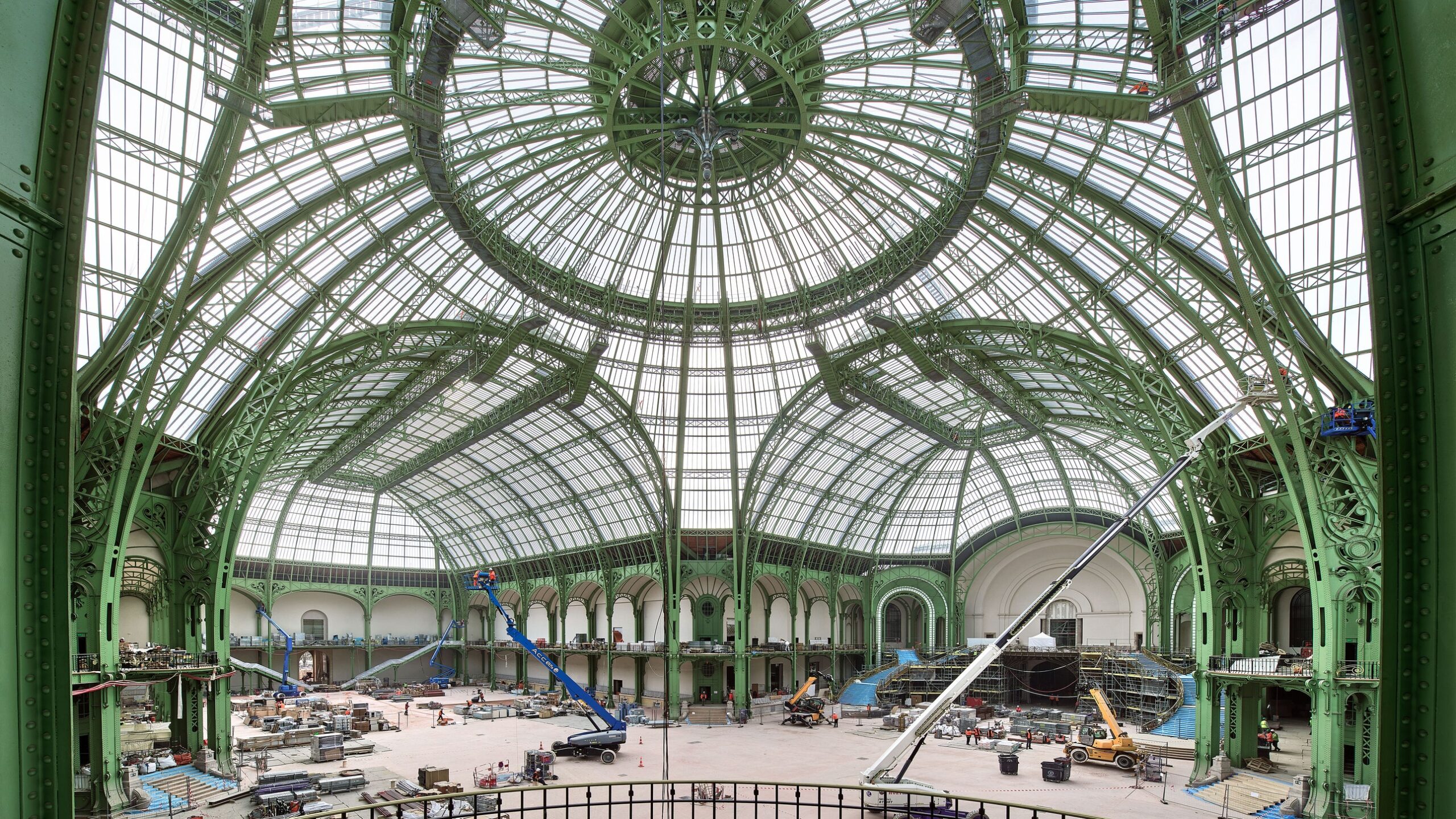The core of the Grand Palais is the Nave, a cathedral-like space that runs 650 feet long and 165 feet wide—the largest of its kind in Europe. “Everything is bigger than you imagine,” said François Wemaëre, CEO of VLD, another Ateliers De France enterprise, which specializes in metalwork, during a site visit in February. “Some of the decorative bronze flowers are one meter wide, so they can be seen from afar.”
The floor of the Nave was originally made from clay, but it was covered in concrete in 1964. During the current renovation, which began three years ago, all was torn up. After a water-based underfloor heating-cooling system was installed, the team from H. Chevalier laid down 145,000 square feet of sandy cement tinted ochre to resemble the clay.
VLD restored 3,600 feet of guardrails along balconies, and the famous Escalier d’Honneur, or Staircase of Honor—straightening the iron and replacing bronze details that were missing or damaged. “There’s more metal here than in the Eiffel Tower,” said Wemaëre, as he surveyed the construction. (He wasn’t exaggerating: 8,500 tons in the Grand Palais versus 7,300 in the Eiffel Tower’s frame.) The team, in collaboration with Maison Dureau, scraped a century’s worth of paint off the railings until they found the original shade of black, repainting everything in that hue. In all, VLD spent 3,000 hours restoring the balustrades and 1,000 hours on the staircase.
Throughout the Grand Palais, partitions have been removed and long-bricked-up windows reopened, increasing its capacity by 60 percent—from 5,600 to 9,000 people—and bringing more transparency and light into the Nave. Outside, artisans lovingly polished the bronze floral grills of the 23-foot-tall front doors, removing tarnish to reveal the metal’s true luster, and coated the iron frames in Tibet green, a tone so deep it resembles pine. “Every time we discover something new, we are enchanted,” Wemaëre said, noting that the rest of the Grand Palais will reopen progressively into 2026.
The discreet touch of Ateliers De France’s expert artisans will be on view in other ways during the Olympic Games, too. At the Palace of Versailles, where the equestrian events will be held, Atelier Mériguet-Carrère helped restore the Hall of Mirrors, and Atelier Chevalier—working with Socra, another member—repaired the majestic Buffet d’Eau fountain. On the Place de la Concorde, where the city is mounting a temporary urban sports park, H. Chevalier was instrumental in the redo of the Hôtel de Crillon. At the École Militaire, at the south end of the Champ-de-Mars, where beach volleyball will be played, Atelier Chevalier restored the façade sculptures. And at the north end, Ateliers De France’s L’Entreprise Générale and Monnaie France have helped repaint Paris’s most emblematic and visible structure of all: the Eiffel Tower. “We are so lucky to have the chance to make beautiful things,” Courtois said. “And we have fun.”
The atelier’s Olympic Games agenda appears in AD’s June 2024 issue. To see Ateliers De France in print, subscribe to AD.

